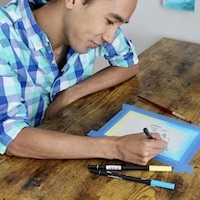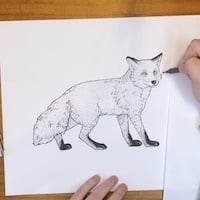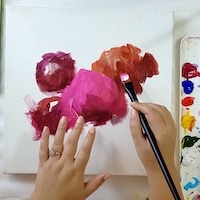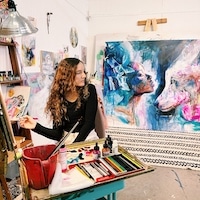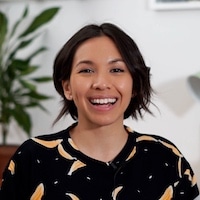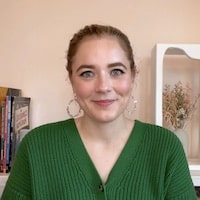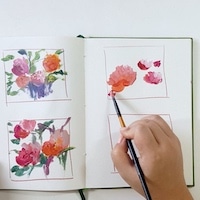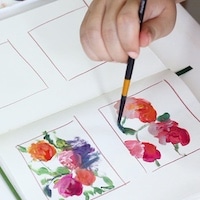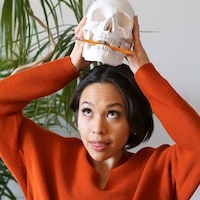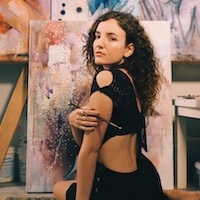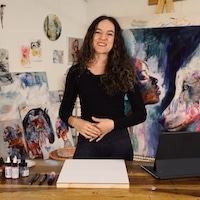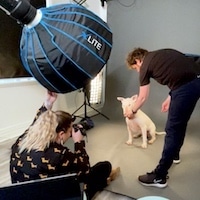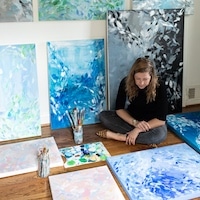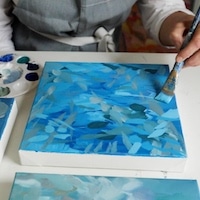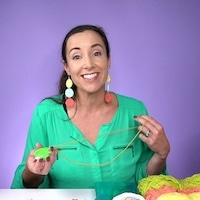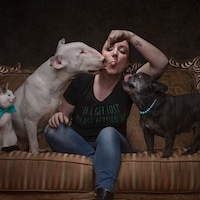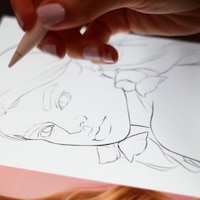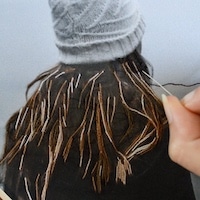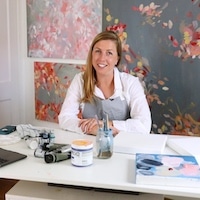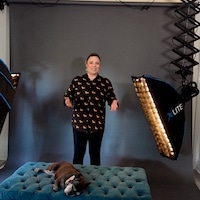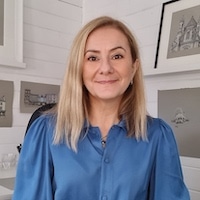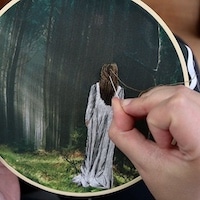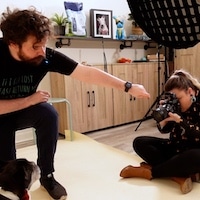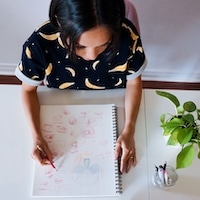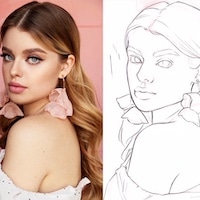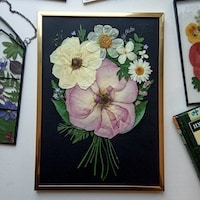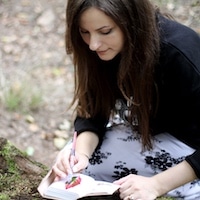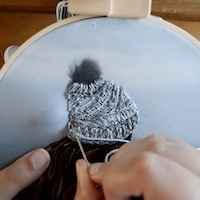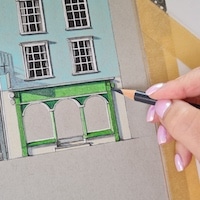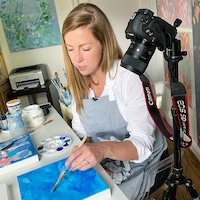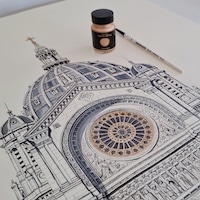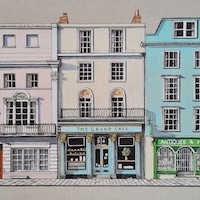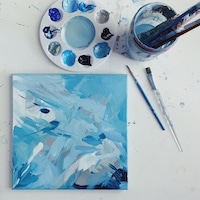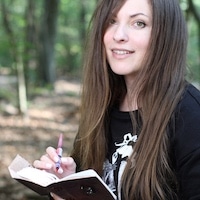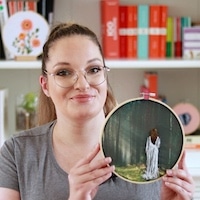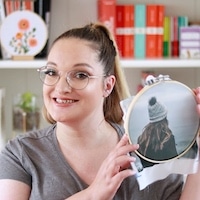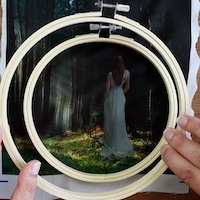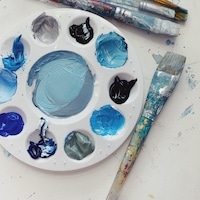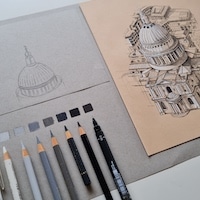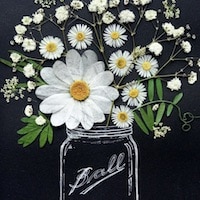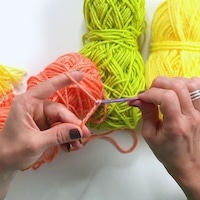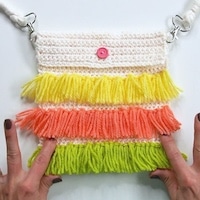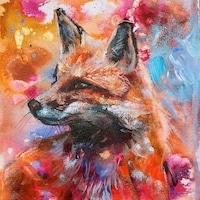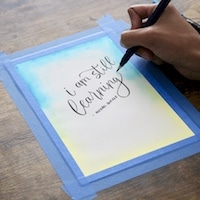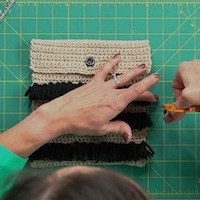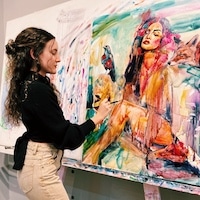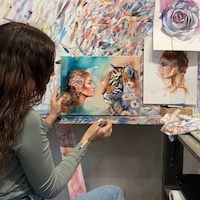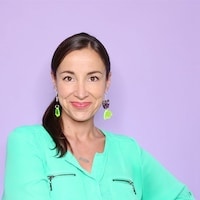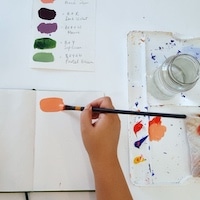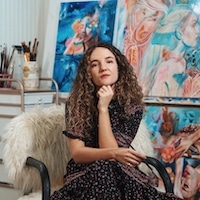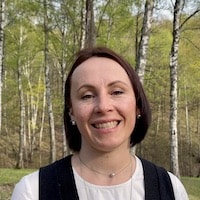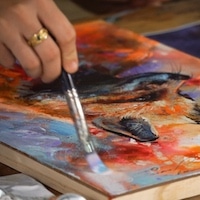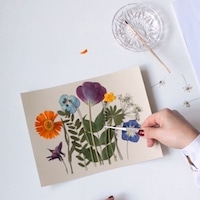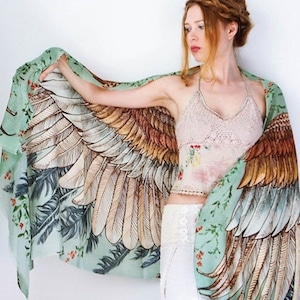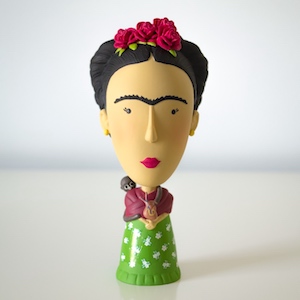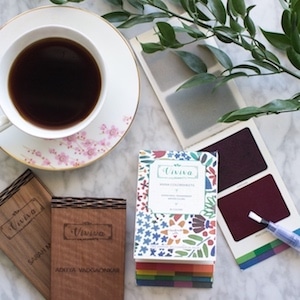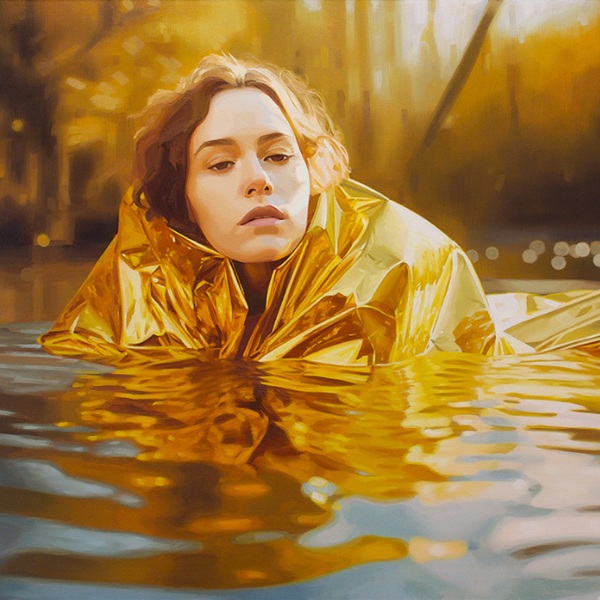
Artist Seongmin Yoo has two identities. Born in Korea and living and working in California, she uses her art as a way to make sense of the duality she inhabits. “This tension between tradition and modernity, belonging and alienation, forms the ground of my work,” Yoo tells My Modern Met. It culminates in life-sized sculptures featuring figures made from a variety of materials that are often discarded, such as bits of broken shells, feathers, and animal hides.
When installed, Yoo’s work is positioned so that it’s in conversation with the space it’s in. Her recently concluded show, titled The Flow of Displacement, saw her figures standing throughout the space at the Holter Museum of Art in a way so that viewers could walk around and fully examine the pieces. This had a secondary effect that is central to Yoo’s work, which allows viewers to “embody the experience of migration and displacement” as they make sense of the figures and all that they are.
Yoo’s unconventional bodies resemble humans in that they have arms and legs, but that’s about where the similarities end. This is by design, as she uses them as an opportunity to highlight how it feels to be living in between two worlds. “My work may seem unfamiliar at first,” the sculptor explains, “yet when people walk among my installations, they can still find themselves within it.”
We had the opportunity to speak with Yoo about her life-size sculptures. Scroll down for My Modern Met’s exclusive interview to learn more about her intriguing works.

What is your artistic background?
I was born in Korea and have been living and working in California for many years. My path into art came from a lifelong urge to make sense of the world through materials and images. I trained in painting and later expanded into sculpture, installation, and performance because I wanted to move across mediums and spaces.
How did you get into creating art?
What truly drew me into creating art was the moment I began to see the synchronicity between a conceptual idea and the materials themselves, when the meaning and the material spoke to each other. That discovery has guided my practice ever since, shaping environments where people can reflect on the bonds between humanity and nature, and on the ways displacement and belonging shape our lives.
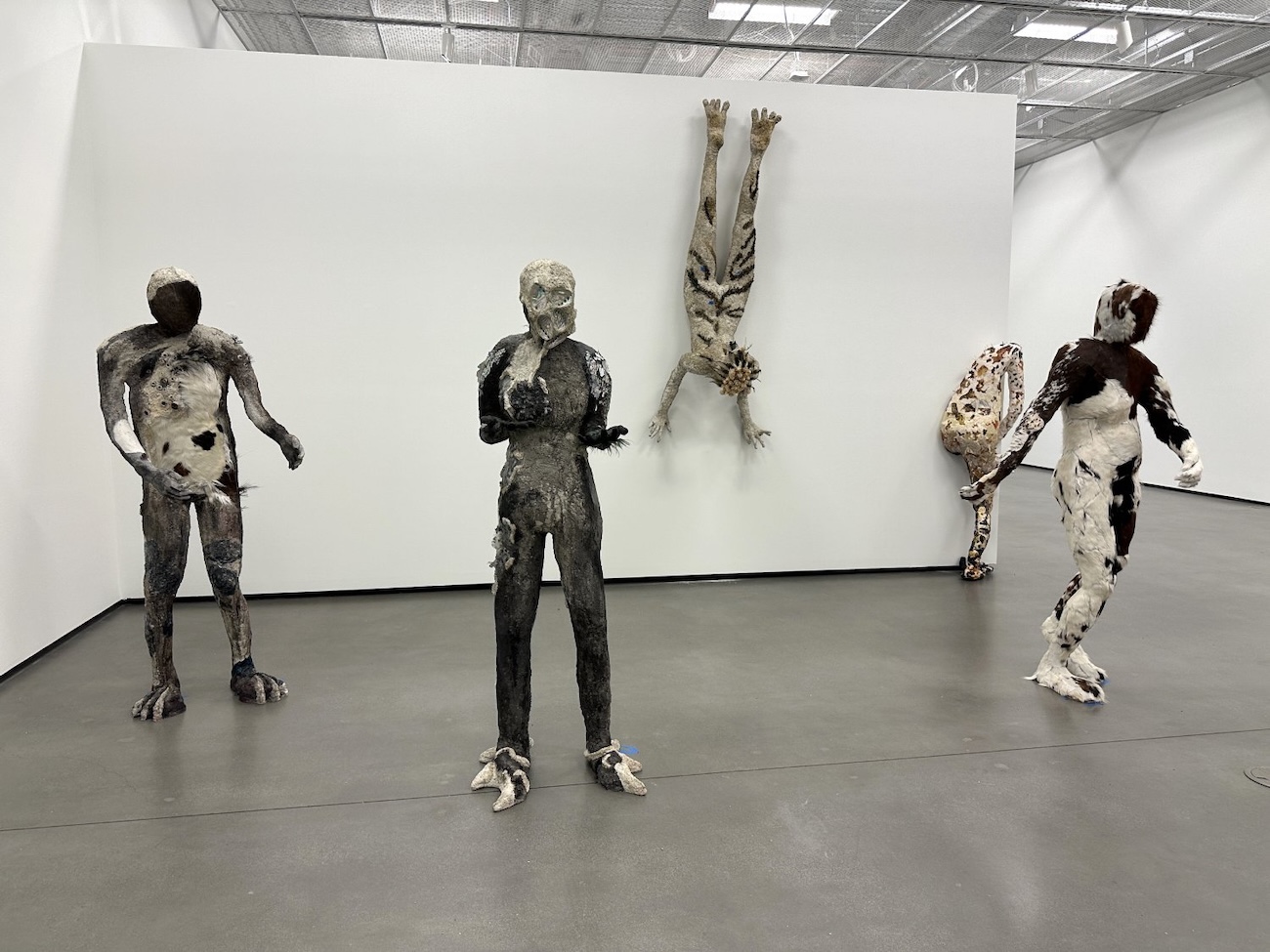
How would you describe your art to someone who has never seen it before?
My work often takes the form of large-scale, life-size figures that people can walk among. They may look unfamiliar at first; fractured, hybrid, part human, part animal, part plant. But as viewers move closer, the materials begin to speak. I use salvaged objects, shells, flowers, animal hides, and cement to create figures that embody resilience and survival. Although I capture the silhouette of the human body, the materials grow together within it, blurring boundaries. In nature, there is no clear separation between plant, animal, and even human-made products; they are already entangled. My figures reflect this interconnection, inviting viewers into a quiet encounter with otherness.
Your sculptural work focuses on salvaged objects and items that others discard. What led to that decision?
I work with what carries both life and memory. Using salvaged or discarded materials is not just about recycling, it is about honoring what is overlooked. A thistle, for example, is thorny and unwanted, yet it feeds bees and butterflies and survives where other plants cannot. In the same way, people who are displaced or marginalized hold an essential beauty and strength.

What does it require of you as an artist?
For me, these materials are not passive; they shape the work as much as I do. They require me to be attentive and respectful to listen to their histories, to let their cracks and imperfections remain visible, and to build forms that acknowledge both rupture and resilience.
At the same time, I ask: why do we imagine we can dominate or control nature? Humanity has long defined itself by transforming the environment. Yet when the environment transforms us, we resist, even fear it. My work reflects this entanglement, showing that nature, humanity, and material are never separate, and that our survival depends on recognizing we are not in control, but part of the same flow.
View this post on Instagram
Your visual language and the themes within your work often explore the intersection of your Eastern and Western identities. Can you speak more to that?
Living between Korea and California, I am always navigating two worlds. This tension between tradition and modernity, belonging and alienation, forms the ground of my work. In Eastern traditions, materials like plants or shells are not just objects, but carriers of spirit and meaning. In the West, I encounter more emphasis on individual form and innovation. My figures hold these together: they are both ancient and futuristic, fragile and monumental.
View this post on Instagram
What role does art play in processing events and emotions related to it?
From this in-between space, I am creating my own culture. And I believe anyone who lives between worlds is doing the same, shaping a culture that doesn’t fully belong to one side or the other, but exists in its own right. That is why my work may seem unfamiliar at first, yet when people walk among my installations, they can still find themselves within it. Art becomes a way to process hybridity not as a conflict to resolve, but as a condition of becoming.
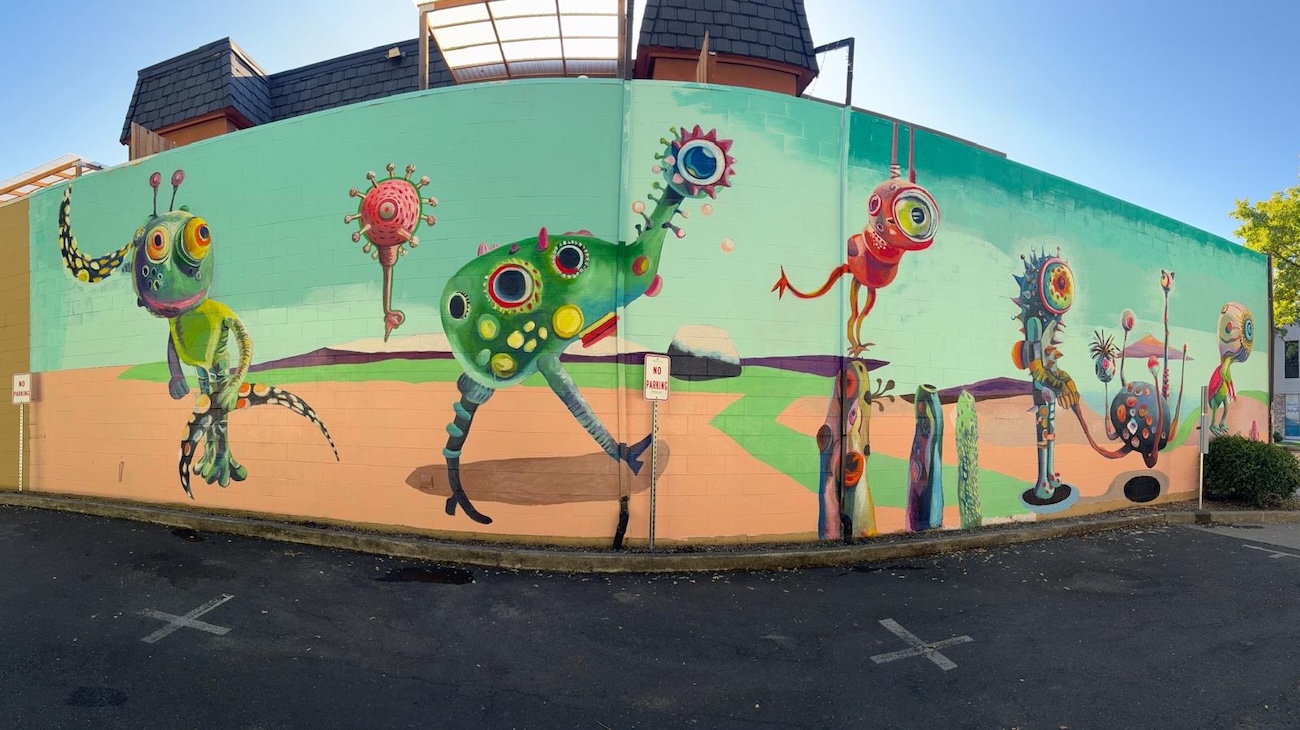
What are you working on next? Anything exciting you can tell us about?
After installing The Flow of Displacement at the Holter Museum of Art, I created two new public murals in Davis. One, Welcome to Davis, was made for the community and celebrates local culture. The other depicts alien figures from my painting imagery across a wall 65 feet long and 25 feet tall.
Now, I am preparing another mural installation for a lobby space, as well as a new sculptural installation for the Morris Graves Museum of Art in California in 2026. Each of these projects extends my exploration of displacement, resilience, and the connections between nature and humanity, while allowing the public to engage with the work in very different ways—on the street, in architectural spaces, and in the museum.

